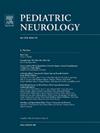Epilepsy Surgery in Tuberous Sclerosis Complex: A TSC Natural History Database Study
IF 2.1
3区 医学
Q2 CLINICAL NEUROLOGY
引用次数: 0
Abstract
Background
Only small series from tertiary care centers inform us on epilepsy surgery in tuberous sclerosis complex (TSC). The generalizability of these results to the wider epilepsy surgery community is unclear.
Methods
Epilepsy surgery data were collected from the National TSC Natural History Database (TSCNHD). Resective outcomes were also compared with a palliative procedure, namely, corpus callosotomy (CC). Proportional odds logistic regression and Poisson regression analyses were used.
Results
Of 2059 patients, 229 (13%) had epilepsy surgery at mean age 7.3 years. Common surgeries included tuberectomy/sublobar resection (44%) and lobectomy/multilobar resection (40%). Use of positron emission tomography (PET) (24%), single-photon emission computed tomography (SPECT) (20%), and magnetoencephalography (MEG) (29%) was low. Invasive long-term video electroencephalography was used in 29%. At mean follow-up of 6.8 years, good outcomes were noted in 56 (41%), moderate in 33 (24%), and poor in 49 (35%) patients. Compared with CC, tuberectomy/sublobar resection (odds ratio [OR], 11.58) and lobectomy/multilobar resection (OR, 5.99) were associated with good outcomes. When compared with CC, most antiseizure medication (ASM) reduction occurred in patients after tuberectomy/sublobar resection (P = 0.040).
Conclusions
Most TSC epilepsy surgeries in the United States were performed without use of PET, SPECT, or MEG. Lower rates of “good” seizure outcomes were observed in this real-world study when compared with previously published outcomes from tertiary care epilepsy centers. Best seizure outcomes were reported after a single tuber and lobar/multilobar resection with a high likelihood of ASM reduction on follow-up. TSCNHD provides a proof of concept in studying surgery outcomes in rare genetic diseases.
结节性硬化症的癫痫手术:TSC自然历史数据库研究
背景:只有来自三级医疗中心的小系列研究告诉我们关于结节性硬化症(TSC)的癫痫手术。这些结果是否能推广到更广泛的癫痫外科领域尚不清楚。方法癫痫手术资料来源于国家TSC自然历史数据库(TSCNHD)。结果也与姑息性手术,即胼胝体切开术(CC)进行了比较。采用比例odds logistic回归和泊松回归分析。结果2059例患者中,229例(13%)接受癫痫手术,平均年龄7.3岁。常见的手术包括结节切除术/叶下切除术(44%)和肺叶切除术/多叶切除术(40%)。正电子发射断层扫描(PET)(24%)、单光子发射计算机断层扫描(SPECT)(20%)和脑磁图(MEG)(29%)的使用率较低。29%采用有创长期视频脑电图。在平均6.8年的随访中,56例(41%)患者预后良好,33例(24%)患者预后中等,49例(35%)患者预后较差。与CC相比,结节切除术/叶下切除术(比值比[OR], 11.58)和肺叶切除术/多叶切除术(比值比[OR], 5.99)的预后较好。与CC相比,大多数抗癫痫药物(ASM)减少发生在结核切除术/叶下切除术后(P = 0.040)。结论:在美国,大多数TSC癫痫手术不使用PET、SPECT或MEG。与先前发表的三级医疗癫痫中心的结果相比,在这项现实世界的研究中观察到较低的“良好”癫痫发作结果率。最好的癫痫发作结果是在单结节和大叶/多大叶切除后,随访时ASM降低的可能性很高。TSCNHD为研究罕见遗传疾病的手术结果提供了概念证明。
本文章由计算机程序翻译,如有差异,请以英文原文为准。
求助全文
约1分钟内获得全文
求助全文
来源期刊

Pediatric neurology
医学-临床神经学
CiteScore
4.80
自引率
2.60%
发文量
176
审稿时长
78 days
期刊介绍:
Pediatric Neurology publishes timely peer-reviewed clinical and research articles covering all aspects of the developing nervous system.
Pediatric Neurology features up-to-the-minute publication of the latest advances in the diagnosis, management, and treatment of pediatric neurologic disorders. The journal''s editor, E. Steve Roach, in conjunction with the team of Associate Editors, heads an internationally recognized editorial board, ensuring the most authoritative and extensive coverage of the field. Among the topics covered are: epilepsy, mitochondrial diseases, congenital malformations, chromosomopathies, peripheral neuropathies, perinatal and childhood stroke, cerebral palsy, as well as other diseases affecting the developing nervous system.
 求助内容:
求助内容: 应助结果提醒方式:
应助结果提醒方式:


